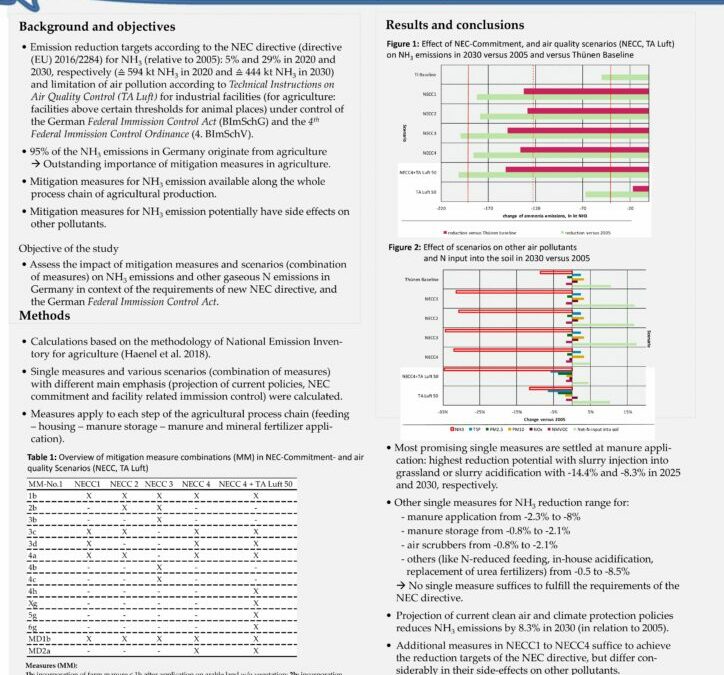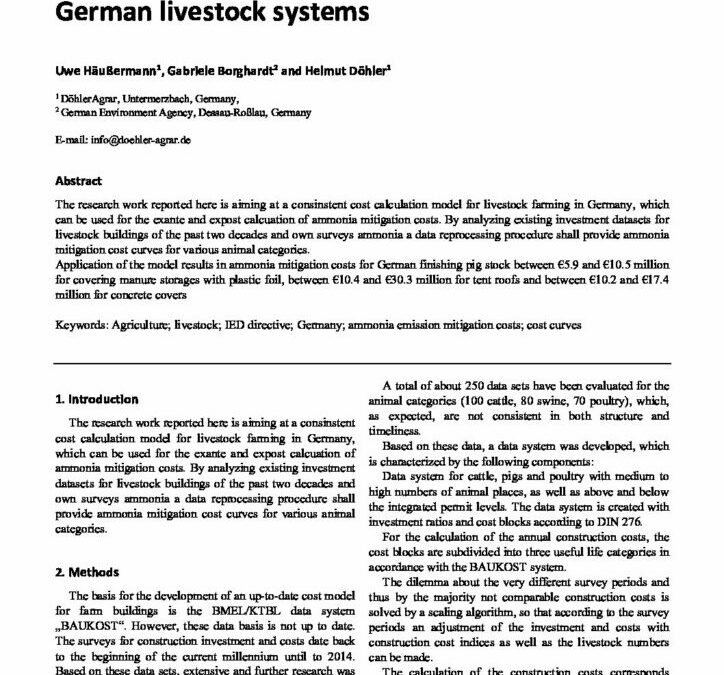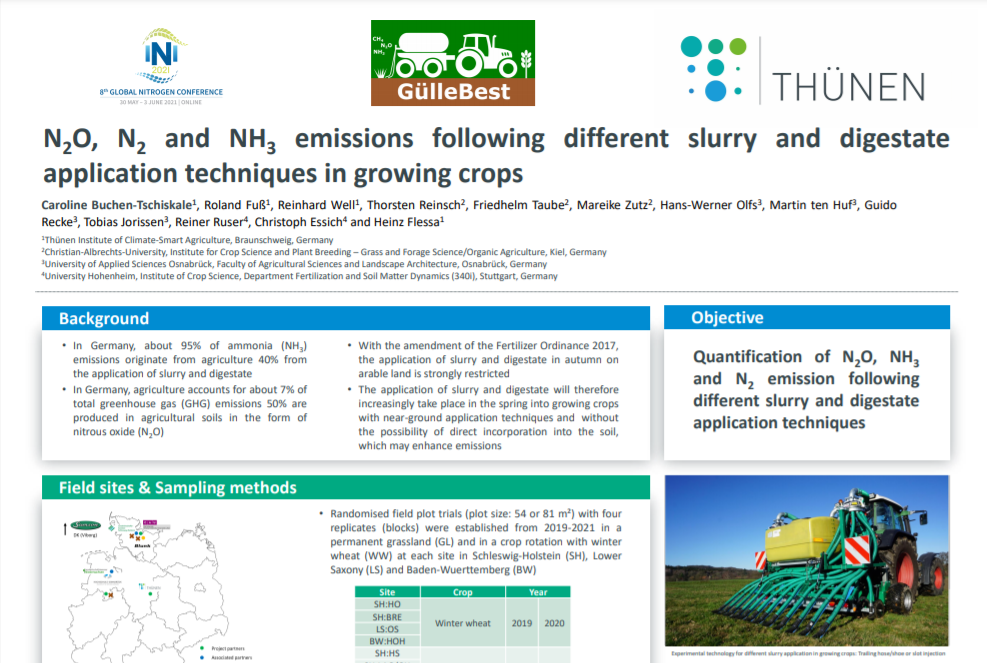
by Alexander Sedov | May 20, 2021 | Posters for INI2021, Posters for INI2021 – 5b. Biogeochemical N Cycle
Assessment of Nitrogen and Carbon compounds emission as aftermath of wildfires in Dniester Delta Reed-beds and aquatic plants are among main nitrogen (N) and carbon (C) depots in the Dniester Delta capable to accumulate up to 10-15% of N from total annual riverine...

by Alexander Sedov | May 20, 2021 | Posters for INI2021, Posters for INI2021 – 7b. Educational aspects, public awareness, risk communication
Measures and scenarios for the implementation of the reduction targets set by the new NEC directive Emission reduction targets according to the NEC directive (directive (EU) 2016/2284) for NH3 (relative to 2005): 5% and 29% in 2020 and 2030, respectively (≙ 594 kt NH3...

by Alexander Sedov | May 20, 2021 | Posters for INI2021, Posters for INI2021 – 7a. From Science to Policy
Cost curves for ammonia mitigation measures in German livestock systems The research work reported here is aiming at a consistent cost calculation model for livestock farming in Germany, which can be used for the exante and exposed calculation of ammonia mitigation...

by Alexander Sedov | May 20, 2021 | Posters for INI2021, Posters for INI2021 – 7a. From Science to Policy
Challenges facing N-regulation in Germany, The Netherlands and Denmark EU countries are facing requirements linked to both the Water Framework Directive (WFD) and the National Emission Ceiling Directive (NEC). The work has been going on for years but there are still...

by Alexander Sedov | May 20, 2021 | Posters for INI2021, Posters for INI2021 – 6a. Closing the N cycle innovations for sustainable N management
Ammonium volatilization from urea and its inhibition by urease inhibitor Limus Invisible contribution – visible success: The addition of urease inhibitors (UI) as Limus® may reduce NH3 emissions from soil applied urea massively, thereby increasing the nitrogen use...

by Alexander Sedov | May 20, 2021 | Posters for INI2021, Posters for INI2021 – 6a. Closing the N cycle innovations for sustainable N management
N2O, N2 and NH3 emissions following different slurry and digestate application techniques In Germany, about 95% of ammonia (NH3) emissions originate from agriculture 40% from the application of slurry and digestate. In Germany, agriculture accounts for about...






